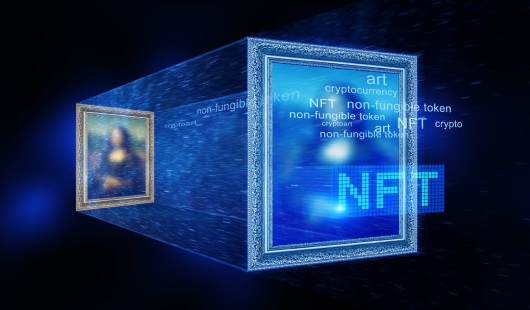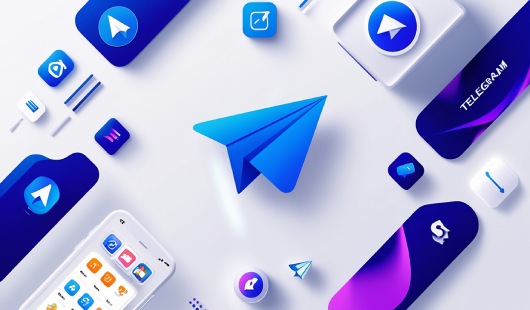-
The NFT market has experienced a tumultuous journey marked by unprecedented highs and dramatic lows. While record-breaking sales like the artist Pak's "$91.8 million Merge" grabbed headlines, the current market focuses on establishing long-term value. According to DappRadar, the NFT market volume reached over $25 billion in the first quarter of 2024, showcasing continued investor interest and a shift toward utility-driven applications. This newfound stability presents fertile ground for innovation, with exciting trends emerging that hold promise for the future. The market has shown resilience towards more practical applications, positioning NFTs beyond mere speculative investments. For more about NFT, explore our NFT development services.
As we look ahead to 2024, various trends are set to reshape the NFT development landscape, presenting new opportunities for businesses and investors. In this blog, we explore these emerging trends.
Key NFT Trends in 2024
The following trends offer a glimpse into the future of NFTs. By understanding and leveraging them, your business can gain a competitive edge in the evolving digital asset landscape.
Hybrid NFTs
Hybrid NFTs are emerging as a significant trend, blending the unique properties of non-fungible tokens (NFTs) with monetization opportunities to create a new category of digital assets. The introduction of the ERC-404 standard has revolutionized the market by enabling fractional ownership of NFTs. This innovation addresses liquidity issues and makes high-value assets accessible to a broader audience.
Key Highlights:
Fractional Ownership: The ERC-404 standard allows investors to own fractions of high-value NFTs, increasing market liquidity and accessibility.
Diverse Applications: Hybrid NFTs are finding applications across various sectors, including art, real estate, collectibles, and gaming.
Market Impact: The launch of Pandora ($PANDORA), the first ERC-404 token, has sparked significant interest, with its market cap nearing $180 million.
Also, Explore | Compressed NFTs (cNFTs) | Solana's Cost-Effective NFT
RWA Tokenization
Real World Asset (RWA) tokenization is set to revolutionize traditional investment strategies by digitizing tangible assets like real estate, art, and textiles on the blockchain. This approach democratizes investment by breaking down expensive assets into smaller, purchasable tokens.
Key Highlights:
Investment Opportunities: RWA tokenization creates new avenues for investors to participate in high-value asset markets.
Success Stories: Projects in 2023 have successfully tokenized commercial architecture and fine art, showcasing the potential of this trend.
Centrifuge's Tinlake: Centrifuge's dApp, Tinlake, facilitates the tokenization of real-world assets, bridging the Polkadot and Ethereum ecosystems and enhancing liquidity for businesses.
NFT Gaming Expansion
The integration of NFTs into the gaming industry is transforming player engagement and game development. By giving players true ownership of in-game assets, NFTs are introducing innovative mechanics and fostering dynamic gaming economies.
Key Highlights:
Ownership and Interaction: NFTs allow players to own and trade in-game assets, enhancing user engagement and interaction.
Market Growth: The NFT gaming market is poised for significant growth, with an expanding user base and increased revenue potential.
The Sandbox: This virtual world leverages blockchain and NFTs to empower creators, enabling the creation and trading of digital assets on its marketplace.
Also, Check | Game Development with NFT | Things You Must Know
Ordinals: Bitcoin-Based NFTs
Ordinals are introducing NFTs to the Bitcoin blockchain, showcasing Bitcoin's potential for complex applications beyond traditional transactions. These Bitcoin-based NFTs embed digital artifacts within individual satoshis, expanding Bitcoin's utility.
Key Highlights:
Innovative Use Case: Ordinals demonstrate Bitcoin's capability to support NFTs, paving the way for new applications within the Bitcoin ecosystem.
Adoption Challenges: While there are cultural and technical challenges, adopting Ordinals signifies a promising expansion of Bitcoin's functionalities.
Metaverse Integration With NFTs
The metaverse is rapidly emerging as a transformative force in the virtual space, with NFTs playing a crucial role. In 2024, the integration of NFTs within the metaverse, especially in gaming, is set to drive significant growth and innovation.
Key Highlights:
Diverse NFT Forms: NFTs include virtual lands, in-game collectibles, and digital art, enriching the metaverse experience.
Transformative Integration: Combining NFTs with the metaverse in gaming offers real-world experiences in virtual environments.
Enhanced Interaction: This integration revolutionizes digital asset interaction, making virtual interactions more immersive.
You may also like | How Multi Redeemable NFTs Elevate Web3 Experiences
Conclusion
The potential for recovery and growth in the NFT market in 2024 is palpable. After a period of explosive growth followed by a significant downturn, the market is now evolving, focusing on practical and valuable applications of NFTs. Hybrid NFTs, RWA tokenization, NFT gaming expansion, and Bitcoin-based NFTs (Ordinals) are key trends that could drive the market forward. For businesses and investors, understanding and leveraging these trends will be crucial for success in the evolving digital asset landscape.
Interested in developing one of these NFT applications? Connect with our NFT developers for a quick meeting.

Our Offices
INDIA
Emaar Digital Greens, Sector 61,
Gurugram, Haryana
122011.
Welldone Tech Park,
Sector 48, Sohna road,
Gurugram, Haryana
122018.














